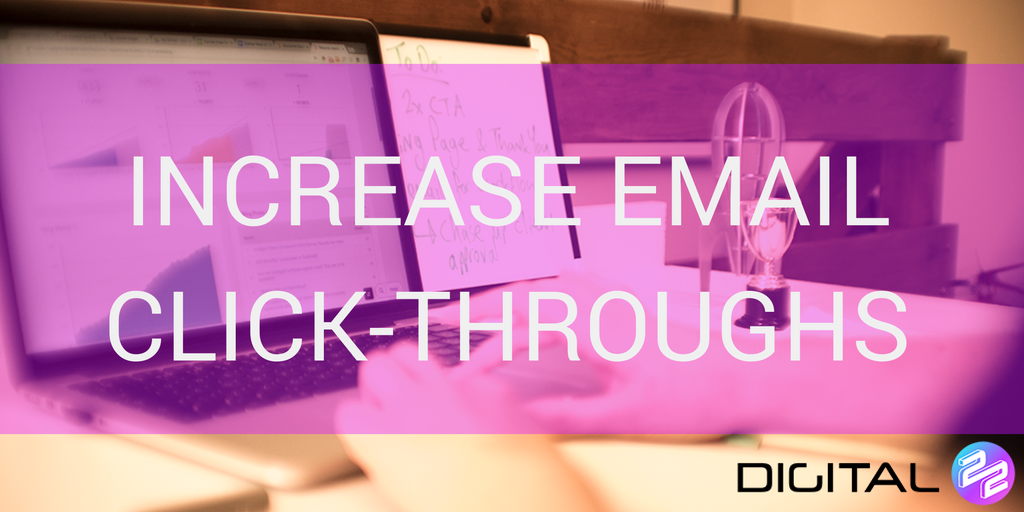Think about how many emails land in your inbox every day. Some you read. Others you ignore. And...
The best email campaigns rock the boat; they sell out tickets, crash webpages and skyrocket conversions. Everyone engaging in email marketing wants to create this type of email marketing campaign, not the type that produces little results and leaves you with no way to track or prove ROI — not a good look for your next budget meeting.
Email marketing isn’t worth its cost if it doesn’t yield the right results. With half of marketers labelling their email campaigns as very poor to average, we’re outlining exactly what it takes to create a truly impactful email campaign and more importantly, how much it costs.
- How much does it cost for email marketing? All the fees involved
- What makes a successful email marketing campaign?
- How can you track the cost and ROI of email marketing?
How much does it cost for email marketing? All the fees involved
Email platform
The most obvious email marketing cost is a platform or email marketing service provider to host and facilitate your email marketing campaign. Of course, there are the usual suspects for standalone email marketing services.
Alternatively, you can go down the route of adopting an all-in-one solution like HubSpot, which includes email as part of the overall sales and marketing package.
Writing and other work
If you want to outsource the activity of writing and designing marketing emails, then this will come at a cost. There’s the option to hire freelancers by the hour or employ individuals to oversee these tasks.
The level of detail and organisational knowledge you require, as well as your expected output (how many emails you’ll be sending each week), will determine which route is right for you and will prove most cost-effective.
Strengthening subscriber lists
Aside from sending out emails, you’ll also need to pay attention to who you’re sending them to. I’ll touch on the importance of subscriber lists in the next section.
However, whether your subscriber list is in tip-top or fair condition, you should spend some time (and money) on improving and organising your mailing list to ensure your email marketing campaigns evolve over time.
The total cost
The total cost of email marketing is individual and changes from company to company. Email marketing can be done on a budget, using free versions of email platforms and your own time to create and design emails as well as perform analysis.
Email marketing can also require significant investment for many larger-scale campaigns. These campaigns tend to use premium platforms, teams of people who contribute to campaigns and standalone tasks for growing, analysing and segmenting email lists.
The total cost of your email campaign — be it small or substantial ― will need to align with your marketing budget and be justified through surefire email marketing success.
What makes a successful email marketing campaign?
Engaged audience
The most important element of any email marketing campaign is its database. While a large list with little movement is bad news for your campaign, a small but active email database has limited potential. A healthy mailing is blissfully balanced with plenty of people on the books who are willing and ready to read, interact and engage with your emails.
For reference, the average mailing list has anywhere from a 16-30% open rate, depending on its industry. So, the best way to assess the health of your own mailing list is by comparing it to your closest competitors.
If your database doesn’t meet its industry standards, there’s little point in investing in email marketing and more sense in spending time sprucing up your little black book of contacts.
Read: How to grow your email list
Sequences and segmentation
Even with the best mailing list, emails shouldn’t be sent at random. Like many other marketers who send out 3-5 emails, on average, in a given week, you might send several pieces of content to your subscribers in a seven-day period. Yet, these emails should follow a logical journey, with each mailshot flowing into another.
Creating an automated workflow on HubSpot, for example, you can link and create relationships between two, three or even four pieces of email content. A workflow not only helps you to visualise how a set of emails interlink but also automates and segments who's sent what email.
Depending on the interaction and engagement of a user, integrated applications like Seventh Sense can filter which contacts should receive an email and when they should receive it.
This way, disinterested users aren’t bombarded with irrelevant emails and active users get perfectly timed inbox notifications helping you make the most of their enthusiasm.
Read: Improve your email marketing strategy with intelligence software
Snappy subject lines
Once your strategy and subscriber list are sorted, it’s all about making surface-level tweaks and optimisations. The most important being a show-stopping subject line.
Writing email content should be straightforward, at least when compared to crafting a blog post. The ideal length of an email is 50 to 150 words, whereas the ideal length of a blog is 2,100 to 2,400 words. But remember, do whatever fits the context.
Yet, while writing emails might look easy, shorter doesn’t always mean simpler.
Subject lines should be between six to eight words, which means you’ll need to get your point across in a very short sentence — around 20 words less than this one. Subject lines need to create enough intrigue for someone to open them but not go so far as to become annoying clickbait.
To make sure subject lines have enough appeal, you can use a tool like HubSpot’s A/B function to pit two titles against each other. A/B testing improves your ability to write titles that resonate with your audience. Yet, this is just one of the ways you can level up your email writing game.
Writing a short and snappy email takes just as much skill as writing an elaborate, exhaustive essay.
Read: How to plan and write an inbound marketing email workflow
Interactive elements
Finally, you should include more than just carefully considered words when creating winning emails. Now, it’s more important than ever to create a way for your readers to communicate and interact with you while in their inbox.
Interactivity in emails can cause your most important email metrics to soar. Marketers report seeing a 200% improvement in click-through rates when using interactivity. Interactive elements in emails include things like countdown timers, quizzes, calculators and product matrixes.
By far our favourite interactive element is video. Adding videos to emails can increase click-through rates by 300%. We love video for this reason but also because it gives our subscribers a more personable, powerful way to digest our content, hearing it from the horse’s mouth so to speak.
Read: What is inbound video? A complete guide
How can you track the cost and ROI of email marketing?
Email marketing is relatively low-cost to set up with only platform fees and standard labour costs to account for. Unlike other marketing activities like running paid advertisements, email marketing doesn’t incur fluctuating monthly fees to ensure a fixed performance.
Thanks to this fairly simple cost profile, email marketing is easy to track. Yet, proving its ROI isn’t always so simple.
What you can track
Open rate
Open rate shows how many people are opting to open your emails. High open rates suggest your subject lines are indeed show-stopping and your brand has a good to great level of awareness.
Formula: Total opens / Total emails
Click-through rate
Click-through rate measures how receptive your readers are to your CTA. High click-through rates show your mailing list means business when they open up your email. Low click-through rates might mean you need to re-think your copy and choice of call to action.
Formula: Total click-throughs / Total emails
Conversion rate
Arguably, conversion rate is all that matters when measuring if your email campaign is working. You need your conversion rate to be competitive but it’s worth measuring other metrics to give a bad conversion rate context.
Formula: Total conversions / Total emails
Number of subscribers
Subscriber lists should expand and never dwindle. Calculating how many new subscribers you have versus those leaving helps you see just how fast your database is growing, filtering disengaged subscribers and switching them for bright-eyed, bushy-tailed ones.
Formula: New subscribers - New unsubscribers
Number of unsubscribers
Working out how many people leave versus how much content you put out can help you decide if you’re turning your subscribers off by shoving unhelpful, irrelevant content in their inbox. Some subscribers should make a natural exit but a sky-high figure here suggests a much larger problem is on the horizon.
Formula: New unsubscribers / Total emails
What you can’t track
Brand affinity
Although you can get an idea of brand affinity through metrics like click-through and conversion rate, you can never be 100% sure of the impact your emails are having when they land in a user’s inbox. Humorous subject lines, personable writing styles and compelling interactive elements all help to build brand affinity. In other words, your customer’s love for your company.
Brand awareness
Similarly, brand awareness can be hard to ascertain. A high open rate suggests brand awareness is high, as your content is on everyone’s radar. However, this isn’t a definitive way to tell whether your company is at the top of everyone’s mind. Clickbait, cost savings and timely content can all encourage clicks without a brand name necessarily making it into a customer’s conscience.
Indirect conversions
While you can track conversion rate as it relates to your specific email marketing campaign and CTA, it’s impossible to know whether a piece of content is responsible for actions taken later on down the line. There are many times when a weekly newsletter or a friendly email reminder might clinch the deal but this conversion won’t be tracked if it happens offline or via a completely unconnected source.
Word of mouth marketing
A crucial asset in offline marketing, word of mouth promotion often happens as a result of a brand’s online efforts. There’s no way to track if your email is shown around a group of friends or referenced in a conversation but the impact of word of mouth marketing is huge, with 64% of marketers agreeing it's the most effective form of marketing — ever.
Prove ROI with our conversion calculator
For more concrete examples of how to track email marketing costs and ROI, use our conversion calculator. As an automated version of the formulas listed above, this calculator does all of the hard work for you, helping to justify marketing spend and aid forecasting even before you start an email marketing campaign.
Best of all — it’s free. Click on the link below to use the conversion calculator now.


